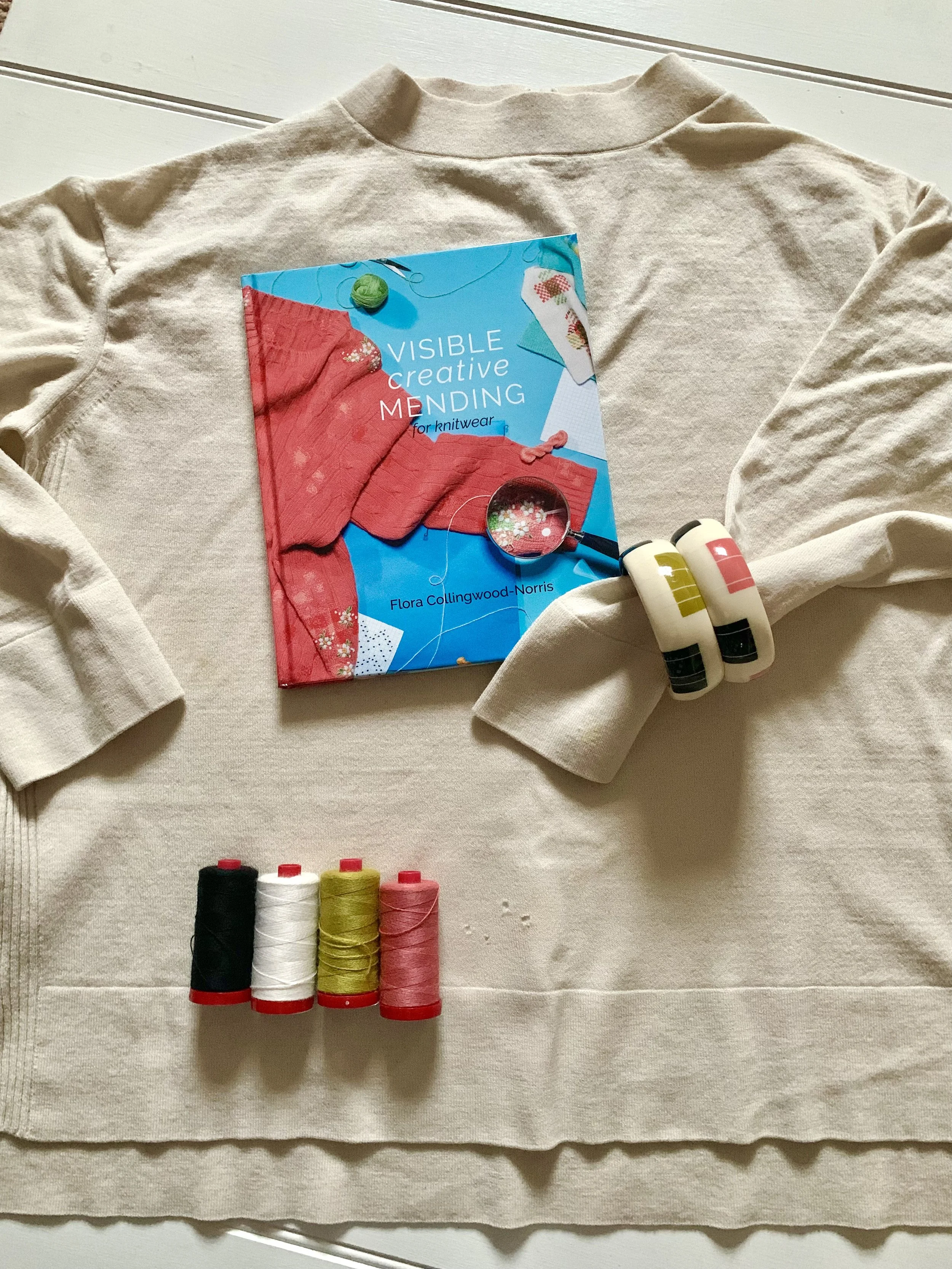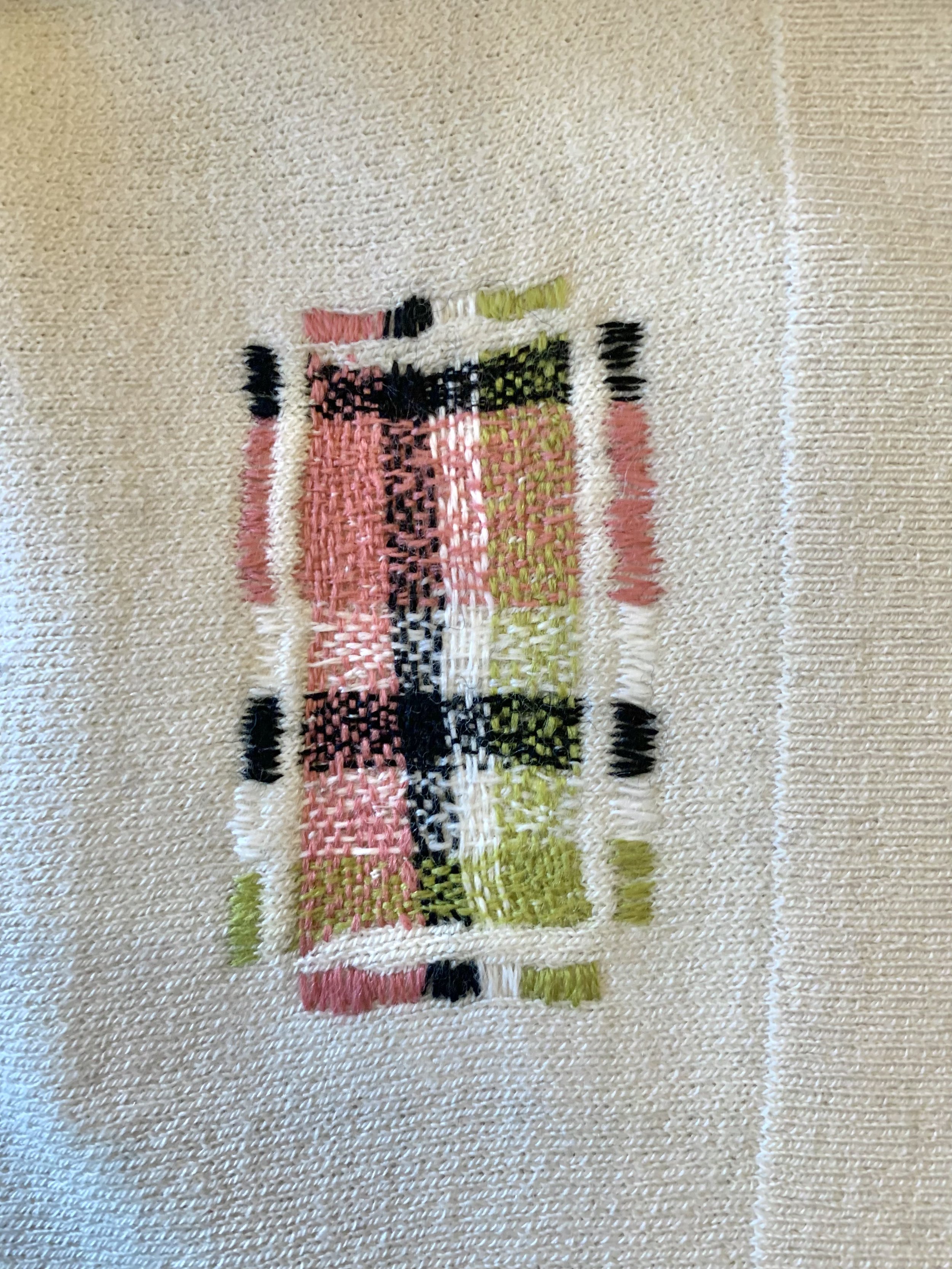Creative Mending - a wool jumper and an embroidered patch
/Mending, repairing, preserving and up cycling are all buzz words of the moment and so they should be. As part of my drive towards sustainable living, I have been wanting to attempt this process for a while. There has been loads of inspirational images popping up on instagram and in the wider media about how to look at this, but it was buying, Flora Collingwood-Norris’ amazing book ‘Visible Creative Mending, that finally launched me on my way with it. It helped too, that much to my dismay, my favourite sweater had a few holes in it and I simply wasn’t prepared to give up on it.
This book is brimming with glorious photos and information that is helpful as well as thought provoking. At the beginning of the book, Ms. Collingwood-Norris has some sobering words :”In the UK alone, we send hundreds of thousands of tonnes of textile waste to landfill every year. Some textiles can be recycled. But recycling only works if the garment is a single fibre, as blends cannot be recycled - something to think about when buying new. Charity shops are overwhelmed. Most of the donated clothes are sent overseas, flooding other nations with cheap clothing and destroying local textile and fashion economies and cultures. Fashion and clothing account for large scale pollution and human exploitation”
This sweater was a rather more expensive purchase a few years ago from ‘Toast’ and is a beautifully comfy knit in very fine wool. It’s one of those sweaters that you can dress up or down and always looks good with jeans and some striking accessories. I have two bangles which are real treasures and I love teaming them with this jumper. They are ‘art deco’ themed but modern too and made by jewellery designer ‘Tiki’ (link below). I decided to use them as my design inspiration for this repair. I used Aurifil wool embroidery thread to work with as it is important to match the fibres.
Before I bought the book, I had actually put a patch of iron-on woven interfacing onto the back to stabilise the holes. It doesn’t say to do this in the book, but actually I think it worked rather well and I didn’t actually repair the small holes before I began to cover them over. I maybe should have done some work on this, but they seemed stable enough. The first section of the book shows you clearly how to make these little woven patches - they resemble tartan and so you can have fun with the colours and pattern element of it. As I had my bangles to use as a guide, I just followed a simple line with blocks of colour.
I do a lot of embroidery and stitchwork, so I didn’t find it too hard at all, but the threads were very fine and I could see it was going to be quite a long process and should, in theory, produce a weave that was similar in weight and size to the sweater (which is really the whole idea). I did have to use my magnifying glass on a stand when it came to adding the weft threads.
By the time I got to this point, I was thinking that it might have been better if I had been working on a chunkier weave sweater for a first attempt, but I also thought how strong and sturdy it felt once the weft threads were woven. It was a slow mend over two days, but the results are really very pleasing.
As the holes vanished, my sweater took on a whole new personality. It is actually really a lovely thing to do and very rewarding. Once it was finished, I pressed it carefully and it looked so good, I was amazed. I felt it had become a unique piece that can now last longer and be more treasured to boot. I have always loved the Japanese idea of ‘Kintsugi’ where they repair broken ceramics with gold lines to make unusual and vibrant works of art out of something already used and loved. This has the same vibe about it and I can honestly say it was worth every tiny stitch.
When you rub your fingers over it, it feels incredibly smooth and tough, which I am not sure I expected. But in fact it really does feel like a repair in that I think and hope it will last for a while. I am tempted to add a few more of these patches on different parts of the sweater in time, just to make it a quirky design feature, but for now, I will just enjoy wearing it again, after it has been curled up, rather dejectedly, in the back of the drawer. I feel like I have taken a new step in my drive to live more sustainably and I hope you might feel inspired to try too. Check out some of the links below for more information and especially check out Flora’s instagram account here.








